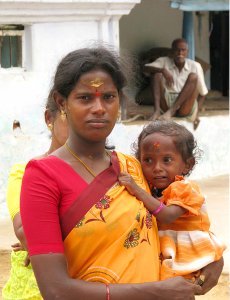 Is there a link between carbon emissions in the developing world and reproductive health?
Is there a link between carbon emissions in the developing world and reproductive health?
High carbon emissions correlate with poorer reproductive health among women in nine countries of 74 assessed, according to US researchers. Conversely, economic development seems to have no significant association with female reproductive health.
FangHsun Wei and Vijayan Pillai of the University of Texas, in Arlington, explain that women’s reproductive health plays a crucial role in sustaining population health. This, they say, is because as women’s health improves they are more likely to make healthy choices and promote the health and well-being of their children.
The World Health Organization define reproductive health as “a state of complete physical, mental and social well-being, and not merely the absence of disease or infirmity, reproductive health addresses the reproductive processes, functions and system at all stages of life”. Moreover, the term reproductive health also implies that a person is “able to have a responsible, satisfying and safe sex life and that they have the capability to reproduce and the freedom to decide if, when and how often to do so.”
The researchers have looked at data on reproductive health, economic status and environmental factors for 74 developing nations across the globe in sub-Saharan Africa, The Americas, Eastern Europe and Central Asia, the Middle East, East Asia and the Pacific nations and South Asia. Carbon dioxide emissions from the burning of fossil fuels and cement production are used as a proxy of environmental degradation given that the activities that drive such emissions also generate pollutant issues at a more local level.
The team used statistical regression analysis to look at the effects of various causative factors on selected and well-measured outcomes: reproductive rights (reproductive rights scale), economic development (GNI per capita), social development (improved water source) and environmental development (carbon dioxide emissions) are independent variables, and reproductive health (RRI) is the dependent variable.
“The results of this study have implications for improving the conditions that are conducive to reproductive health of mothers and infants in developing countries,” the team asserts. They point out that the correlation between carbon dioxide emissions and poor reproductive health in the developing world (despite CO2 emissions being far lower per capita than in the US) implies that participation in global initiatives to develop renewable and sustainable energy sources and avoiding the use of fossil fuels will ultimately have beneficial effects on reproductive health as well.
![]() FangHsun Wei, & Vijayan K. Pillai (2012). Environmental quality and reproductive health in developing countries Int. J. Sustainable Society, 5 (2), 146-159
FangHsun Wei, & Vijayan K. Pillai (2012). Environmental quality and reproductive health in developing countries Int. J. Sustainable Society, 5 (2), 146-159